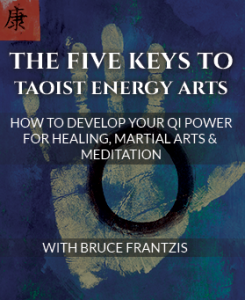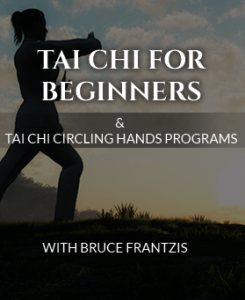Tai Chi Secret #1
The first tai chi secret is that choosing the appropriate tai chi style for your goals is very important. In fact choosing a tai chi style is one of the most important decisions you’ll make/or don’t make on your journey to learn tai chi. Not ‘consciously’ choosing would be like attending a university and not caring what degree you studied.
For most of the public, tai chi is just one subject, much like a subject area like math or literature. Yet to the more experienced tai chi practioner there are many style of tai chi and choosing the right style is a very important thing to consider before you begin. Now you may luck out and study a style that matches your goals; then again you may not resulting in frustration or even worse injury.
So in this post I am going to review the main styles and go over what tai chi styles are best for different goals and age groups. And don’t worry, even if you already are practicing a certain tai chi style it helps a lot to know the differences because at some point you may also benefit greatly from learning another tai chi style or at least you can be more informed about the specific tai chi style that you are practicing.
Essentially, it should first be pointed out that all tai chi styles have far more in common with each other than they have differences. All tai chi styles improve health, reduce stress and help you move more gracefully. All tai chi styles develop chi and use slow-motion, flowing, circular movements. For most practicioners, they choose a tai chi style based on the quality of the teacher where they live, the convenience of the school and other personal factors. Knowing about the tai chi styles upgrades your tai chi knowledge and guides you to make the right choices in the future.
Tai Chi’s Five Major Styles: Which Style Is Best for You?
Each tai chi style has a different syllabus, structure and flavor as regards how its specific tai chi techniques are applied. All five tai chi styles can potentially give you tai chi’s health benefits.
Four of tai chi’s five major styles—all except the combination tai chi styles—derive their name from the founder’s surname. The Chinese talk about the tai chi of the Yang Family, Wu Family, Chen Family and Hao Family.
Each tai chi style takes a different approach toward the movements of their forms and each tai chi style has many variations or schools. Each tai chi school is composed of practitioners who follow specific leaders or teachers within the tai chi style. Each tai chi school generally emphasizes a specific approach to the art: their tai chi forms may have recognizable stylistic differences, trademark movements or develop specific self-defense training skills. Let’s look that the five major tai chi styles:
The Yang Tai Chi Style
The Yang style is the most popular and widely practiced tai chi style worldwide. In England and America at least 20 main variations of the Yang tai chi style exist and in China there are even more. The various schools originated from the approach of a specific tai chi master or from a particular geographic region within China. Each variation has a distinct flavor, looks different from the others to a greater or lesser degree and may emphasize different technical points. All, however, will be called Yang style tai chi.
The Wu Tai Chi Style
The Wu tai chi style is the second most popular tai chi style. It has three main variations with strong stylistic differences that derived from the founder, Chuan You, his son, Wu Jien Chuan and his grandchildren.
The Wu tai chi style was created directly from the Yang tai chi style and as such is the largest variant of the Yang style. However, unlike most traditions in the Yang tai chi style, most Wu tai chi schools emphasize small, compact movements over large and medium-sized ones. The Yang and Wu tai chi styles, with all their variations, encompass the vast majority (80 percent or more) of all tai chi practitioners.
The Chen Tai Chi Style
The Chen tai chi style (villiage) is the original style of tai chi from which the Yang tai chi style was created. It is relatively hard to find Chen tai chi style teachers and adherents account for about one percent of all tai chi practitioners.
Unlike most tai chi not all the movements of the Chen tai chi style’s first level of training are done in slow motion. The Chen tai chi style alternates slow-motion movements with short, fast, explosive ones. It demands more physical coordination and may strain the lower back and knees more than other styles; consequently Chen style tai chi is difficult for the elderly or injured to learn. The complexity of the Chen style tai chi movements, which include fast releases combined with jumping kicks and stamping actions, makes the Chen tai chi style more athletic and physically difficult than most other tai chi styles and, as such, is often more appealing to young people.
The Hao Tai Chi Style
The Hao tai chi style is exceedingly rare in China and almost non-existent in the West. The Hao tai chi style is characterized by small frame movements that are extremely small. Hao tai chi style’s primary focus is on tai chi’s more internal chi movements with physical motions being much less important. As such it is considered an advanced tai chi style that is hard to appreciate for practitioners without significant background knowledge of tai chi.
Combination Tai Chi Styles
Combination tai chi styles are the third most popular styles after the Yang and Wu tai chi styles. These tai chi styles freely mix and match movements from the four other tai chi styles as well as movements from other internal martial arts styles, such as bagua and hsing-i.





Hi Bruce
I’ve read 5 of your books, also have some of your DVDs and thanks for these and also for the teachings you send out online. I am interested in learning more about Taoist meditation and combining this with other types of Tai Chi exercises. I have practised meditation in various forms for 40 years and now feel this is the way to go for me. To my knowledge, as yet there isn’t any teaching of this where I live (East Kent, UK, Matthew Brewer’s Tai Chi group, Daoist Internal Arts).
Could you please give some more teachings about this online?
Thanks again and enjoy your holiday!
Mari Shackell
Whitstable, Kent UK
Hi Mari,
We have launched a new series called Meditation Monthly which is a monthly release. I am going to be releasing a lot more this in the future so stay tuned. Meditation is my passion and I am just now fully starting to move into that teaching phase. This summer is the Longevity Breathing course which is really a basic requirement if you are going to go deep into mediation–so if you can make part or all of that it may help you.
Be good,
Bruce
Hi Bruce,
Informative article, thanks. I had heard of the Hao style once before but assumed it was a Yang sub-style. Now I’d love to see what their form looks like. YouTube here I come.
About your video above, is that Feng’s form that you are demo-ing, or laojia?? The latter can look sooo different depending on the practitioner that I can’t tell. BTW, my main Chen style teacher is from Chen Qing Zhou’s lineage though i did spend a few years doing Feng Zhiqiangs stuff. Hey, now there’s a Chen sub-style I’d love to read some articles about (hint, hint).
Regards,
Afshin Mokhtari, L.Ac.
Hi Afshin,
I learned the Chen Style from Feng…who knows maybe I will write a blog about that in the future….
Bruce
Hi Bruce,
I have read a number of your books, including both editions/versions of “Opening your energy gates”. (old and new) I started studying martial arts in the early 80’s and have deliberately migrated into the chinese internal systems, enjoying bagua, hsing yi and tai chi.
I learnt the Hao style from Sifu Sun Da Fa and he called it the Wu-Hao style and have some literature on it calling it so. He is known for his hard qigong and and Hsing-Yi and preferred he the Wu-Hao style because he could do qigong most easily with that style.
It is nice to be able to pick and choose styles of tai chi but if you have limited choices or are not in the circle of chinese martial artists or don’t know where to look to connect to the appropriate teacher, then you unfortunately have no choice.
I have had my share of teachers who know forms but nothing else or instructers who know some of the deeper aspects but only taught forms.. These type of instructers tend to strut around and there is usually a cloud of groupies around them.
From my experience, the key points you need to know, such as the coiling and alignment and opening and closing are rarely taught. Books such as from Mantak Chia have some of these concepts but he tends to dive into the esoteric aspects.
Applying your methodology from the new Tiger Dragon Qigong book to explaining the various internal aspects of tai chi would be useful.
regards
Charlie
Hi Charlie,
Yes as you know very few teachers teach the internal components which make up about 80% of the form. I will be teaching more tai chi in the coming years and with a little luck we will have some products that talk more about the internals…be good.
Bruce
Master Bruce,
I just stumbled on to tai chi and the internal arts in the last few months and have engulfed myself. I am basically trying to learn on my own for there aren’t any “real” internal teachers in my area. I’ve mostly been wanting to learn neigong and it’s very meditative intensive aspect for reaching high level meditation is my number one goal. But i’ve also been trying to study yang style tai chi because i understand the forms aid in perfecting the body and developing the chi. I’ve got your first version of “opening the energy gates” and have been trying to follow it, but what i’m really interested in is ebing able to reach an extremely deep level of meditation for chi manipulation and also be able to bring that deep state to the tai chi form. Is there any advice?
I’m sorry, but I think it’s important to note that Chen Style being the “original” is greatly debated. Another version says Wang Zhong Yue taught Jiang Fa & Chen Wanting. Chen Wanting developed Chen Style while Jiang Fa kept the original teachings going in what would later be called Zhao Bao Tai Chi Chuan, to which He Family Tai Chi is a variation.
This rundown of styles is great, though!
You give historical information about the different forms, but no information at all about which to select for different conditions or reasons. So after writing about how important it is to choose the right form you offer no help with doing that. What is the point of this page other than history?
Hi Arthur, I recommend finding the best teacher in your area and often that can be more important than the style because they will be able to give you the correct form and alignments so that you can protect your body AND you can maximize the energetic benefits of practicing. That being said I teach the Wu style because it is gentler on the body because it is a smaller form and leads into a meditation tradition at some point. The Yang and Chen styles are ‘generally’ better for those who are more interested in the martial applications and they have wider movements. Good luck, Bruce
Dear Bruce …
What about the oldest of all Taijiquan styles, the Taijiquan from Wudangshan?
Best regards, Stephan
Dear Mr.bruce I have just recently read about your relaxing into yourself found it very beneficial , I want to learn taichi but confused of so many forms and lineage can you please guide me to the one that can I start with ? Thanks in advance
Hi, there are many lineages and forms of Tai Chi and it’s difficult to recommend one over the other. However, if you are trying to start, Bruce created an online program that is a perfect entry way into the world of Tai Chi. You can learn more about it here.